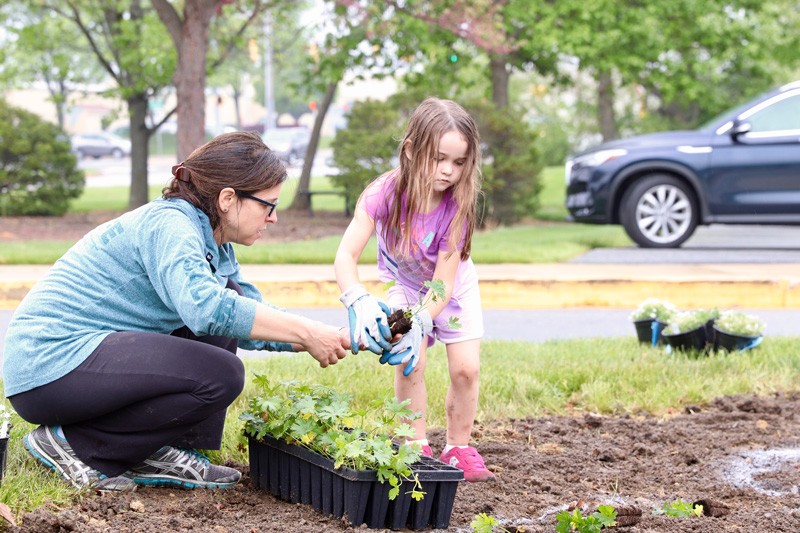Edible Forest Garden

UD students learn and help staff teach children where food comes from
On an overcast Saturday morning, staff and volunteers gathered at the Early Learning Center and Laboratory Preschool, both located on the University of Delaware’s Children’s Campus. With shovels and wheelbarrows in hand, they set about installing an edible forest garden.
This multilayer collection of fruit and nut trees, legumes, shrubs, roots and vegetables is comprised of many plants that provide at least one component — berries, leaves or other produce — that is edible with proper care and preparation. Additional plants provide vital services like attracting pollinators or providing nutrients to the soil and surrounding garden. Students at the Children’s Campus will learn about garden maintenance, food production and preparation. They’ll have an opportunity to explore and experience the smell, texture and taste of the plants as they grow.
The garden planting is a major milestone in this cross-disciplinary project. Supported by a seed grant from the Center for Food Systems and Sustainability (CENFOODS), the edible forest garden is the culmination of a group effort from students, faculty and staff across five colleges and the University of Delaware Cooperative Extension.
Instead of installing the food forest on a single, centralized location on the Children’s Campus, the project’s designers opted to develop “sites” located throughout the campus to create a cohesive learning experience that is mindful of student learning goals and promotes connections between the schools on the Children’s Campus.
“Our curriculum is very sensory-based: feeling, seeing, smelling, tasting,” said Kelly Freel, associate director of infants and toddlers at the Early Learning Center. “So now that we have all of these other types of plant systems being added to our environment, we want children to reflect on how we are interacting with these systems along with other animals and insects.”
Teachers plan to incorporate the garden into existing outdoor learning curriculum. For example, this past year, students at the Laboratory Preschool completed a learning unit on fungi. There was an abundance of jelly fungus and some turkey tail fungus that was sporadically popping up around campus. Under close faculty supervision, students harvested fungi spores by peeling back the crumbling layers of a rotted log, observed them under microscopes and magnifying glasses, researched fungi species, how different species grow and so on.



